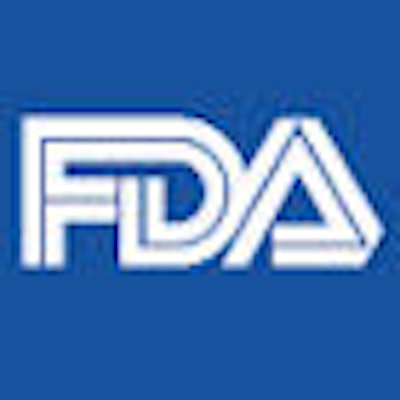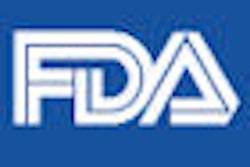
The final day of a two-day public forum on the U.S. Food and Drug Administration's (FDA) regulation of mobile medical apps addressed clinical decision-support (CDS) software. It's a tricky subject given the differences in CDS tools, levels of patient risk, and even the very definition of what constitutes a CDS application.
The FDA convened the hearing to discuss the agency's recent guidance on mobile medical applications. Coverage of the first day of the forum at the FDA's Rockville, MD, headquarters can be found here.
In the second day of the meeting, panelists weighed the issues surrounding the regulation of standalone software that provides some type of clinical decision support. Discussion centered on the difficulty in regulating the many forms of CDS, the need to define CDS, how to evaluate risk from the various forms of CDS, and how best to evaluate its safety and effectiveness.
The CDS category can range from simple medication reminders for patients to helping a clinician make decisions while treating a patient, said Bakul Patel, from the FDA's Center for Devices and Radiological Health (CDRH). A complex radiotherapy algorithm is another example of a product that would fall into this domain.
While decision-support functionality can also reside in a medical device such as a cardiac bedside monitor that analyzes waveforms and triggers alerts and recommendations for physicians, standalone CDS software gathers data, compares the data with a database, and provides decision support to a patient, caregiver, or clinician, Patel said.
The FDA wanted to get input from panel members on how to assess these kinds of software, including important factors to assess, allowing the agency to differentiate between high- and low-risk patient impact and determine what is needed to ensure that standalone CDS software is safe and effective, he said.
The FDA also sought opinions on its current list of risk-assessment factors for CDS, including evaluating the software's level of impact on a subject's health, condition, or disease; its degree of acceptance in clinical practice; and its ability to easily identify erroneous software output, said Kristen Meier, PhD, of the FDA.
Quality issues
Dr. Jonathan Wright, of the Agency for Healthcare Research and Quality (AHRQ), noted that the literature shows that CDS can improve quality. However, the research also shows that it's more likely to be used successfully if used properly, he said.
"The key point of emphasis for me is: Are we causing harm by using these devices not in the way they're intended, or not by the people intended?" he said.
It's also important to consider where the software falls on the spectrum of decision-support aids, such as if it's something that's designed to provide time savings or if it's a radiation dosing algorithm, Wright said. Many factors need to be weighed in evaluating CDS software.
"We have to think carefully about not just who's using these things, but where we are using them and when we're using them, and the form that they're being presented, or we're doing a disservice to everybody who receives healthcare in the country," he said.
As the FDA looks to provide regulatory guidance on CDS software, it should also consider providing guidance on implementation, said Stanley Pestotnik, co-founder and general manager of standalone CDS software developer TheraDoc Clinical IT.
Defining CDS
The American Medical Informatics Association (AMIA) believes that it's critical to define clinical decision support to move discussions forward, said Meryl Bloomrosen, vice president of public policy and government relations.
Additional consideration needs to be paid to the evolving nature of clinical decision support, as there is a growing array of mobile devices, technology, and software applications being used to offer up or deliver CDS, she said. A lot of approaches exist regarding the definition of and terminology related to CDS.
"We would hope that the FDA will seek broad public- and private-sector organizational input to [definition issues] related to clinical decision support," Bloomrosen said.
The AMIA considers it essential to distinguish between generic decision support such as information resources (i.e., articles in Medline and books or antidote details in a poison control system) and patient-specific or proactive decision support, she said.
In addition, the AMIA believes there's an ongoing need to coordinate existing efforts across the federal government and between and within the research and practice communities in the public and private sectors on CDS and mobile health, Bloomrosen said.
There also needs to be a framework to help ensure the safety and effectiveness of healthcare IT systems in general and applications in general, including decision support.
"We caution the FDA in focusing too narrowly on [CDS] or in considering mobile apps in isolation from other [CDS] delivery methods or contexts," she said.
There is also a need to develop and disseminate "best practices" for HIT design and implementation, usability, and all aspects that affect the quality of how CDS is implemented.
"We think there's a need for methods to identify best practices on the national level with a public-private sector initiative," she said.
Bloomrosen also pointed to influence from the rapidly emerging convergence of technology, devices, and applications, as well as the continuum of new and evolving forms of patient care delivery and payment methods. CDS criteria are also included among the meaningful use objectives of the U.S. government's healthcare IT stimulus program, and those criteria should not be left out of the discussion.
"We would hope that the FDA adapts the information and the evidence base related to [CDS] that has been undertaken in the context of health information technology systems and brings that to bear on [the] conversation related to mobile apps," she said.
It's important to take into account not just how CDS functions today, but where it will be in the future, said Dr. Meghan Dierks of Beth Israel Deaconess Medical Center.
"Whatever strategy that the FDA chooses, it [should be] robust enough or adaptable enough to deal with that in a future [technology] state," she said.
Assessing risk
Dr. Satish Misra of iMedicalApps noted that the diverse range of CDS applications runs the gamut, from applications that could potentially cause fatal outcomes to applications where major errors are meaningless.
In developing regulations for these apps, the FDA should consider where regulation should end, where the concept of caveat emptor ("let the buyer beware") starts, and where it falls to clinicians and healthcare associations to provide best practices, Misra said.
"One thing I would pose is that healthcare professional associations may have a role here in defining what applications are useful and taking some of that burden off this regulatory framework," he said.
Given the diverse nature of clinical decision-support applications, different levels of evidence are required depending on what they're being used for, said Wendy Nilsen, PhD, from the Office of Behavioral and Social Sciences Research at the U.S. National Institutes of Health (NIH).
Another issue that needs to be worked out is how these applications will be continuously evaluated over time, such as through postmarketing surveillance, she said.
The degree to which people rely on CDS software as an autopilot -- as opposed to a system that provides advice -- should be chief among the criteria used for regulating CDS software, said Dr. Michael Segal of SimulConsult.
In lower-risk situations, the FDA needs to avoid being seen as curbing innovation, according to Segal.
"One wants to avoid choking off an area that many people see as one of the keys to giving us medical care that is both cost-effective and accurate," he said. "And if we choke that off through ill-considered regulation, we would be doing a lot of damage."
AMIA's Bloomrosen suggested the following approach for categorizing risk: Clinical decision-support software that interacts directly with patients or consumers might provide a moderate level of risk, while CDS apps that provide guidance to providers -- but leave it up to them to accept or reject the guidance -- would offer a lower level of risk because a qualified professional serves as an intermediary.
Other risk-classification categories of CDS could include the following:
- Autonomous forms of CDS that affect patient care directly without provider oversight
- Apps that do not make patient-specific recommendations and are always intermediated by a provider
- Patient-directed CDS with or without provider oversight
- Human-mediated CDS that's intended for the consumer or caregiver and not the provider
- Human-mediated CDS that is not patient-specific
Safety and effectiveness
CDS is a technology that is added on to clinical care and is constantly evolving, said Dr. Richard Katz, chief of cardiology at George Washington University. That makes it difficult to adhere to a protocol for a randomized clinical trial, and some other method will be needed to judge the technology and its safety, he said.
A coordinated effort across the federal government and also between the public and private sectors is needed to develop a reasonable approach to evaluate safety and effectiveness, AMIA's Bloomrosen said.
Some possible approaches to assessing safety and effectiveness include a statement of conformance to certain standards, software verification validation, clinical data that show reproducibility of its output, and clinical trials that demonstrate diagnostic performance, said the FDA's Meier.
A cautious approach to regulation is warranted with CDS, as it's a nuanced technology that delves into both the science and art of medicine, said AHRQ's White.
AMIA's Bloomrosen emphasized the importance of transparency with CDS products.
"Transparency needs to be [ensured] in terms of the knowledge base, the data sources that might be involved in creating this [CDS] offering, the inferences that are used [by the CDS tool], what the [CDS] tool is doing with these data and the evidence, and really who the intended users are and what the intended use is, " she said. "Transparency, transparency, transparency."
Some additional research may be warranted to develop test protocols and methods for examining the integrity of the components of CDS, Bloomrosen said.
Wrapping up the session, FDA's Patel said that the agency will continue to explore the complicated area of clinical decision support.
"Our goal in the end is to have a rational approach, which would be useful and definitely not stifling in ways of creating better healthcare or better support in making decisions," he said.




















